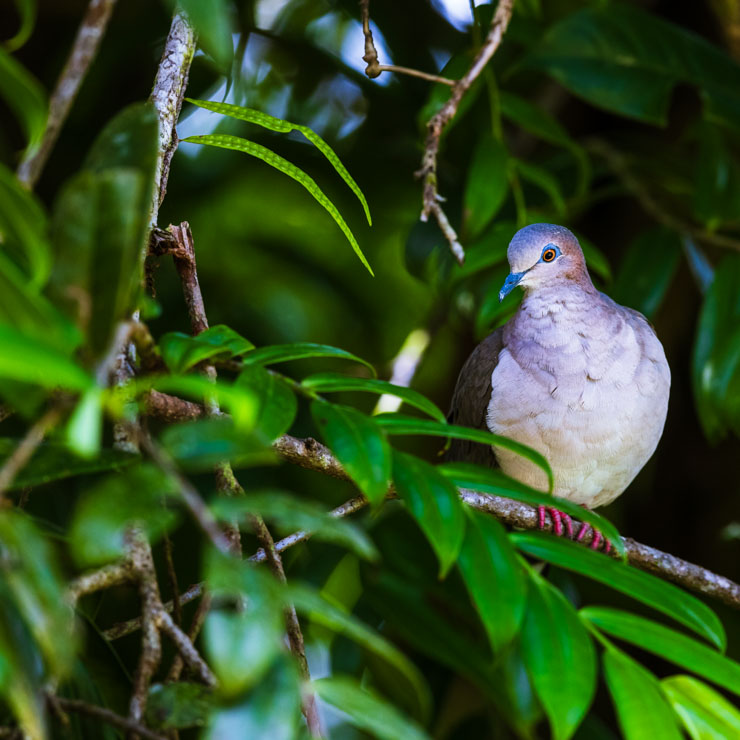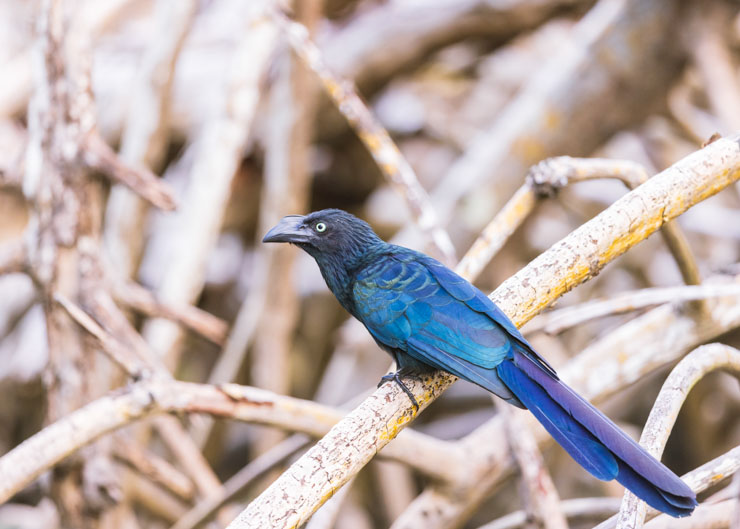Several years ago, after traveling for a couple weeks on a birding trip, I returned to my native Trinidad and Tobago utterly confused. A bird darting across the road in front of my vehicle took me much longer to identify than before, bird calls that matched species instantaneously became mysteries. Between then and now, I don’t know what happened – but fortunately after my last spate of wanderings I didn’t return to T&T as lost as before.
It’s a fine consideration to shift one’s perspective from time to time. Returning to the place where I grew up and learned the absolute most about birds and bird behaviour was an exercise in reacquainting with the species that saw me grow as a birder, photographer, and guide. Showing people birds here has already taught me that even the commonest of them all deserve attention, and after some months away I was just as excited to see these birds as the folks seeing them for the first time.
Continuing with this theme of celebrating these species, I figured I’d share some of the sights we enjoyed on a few local tours I did since returning to the islands I call home. Enjoy!

These Black-bellied Whistling-Ducks were a welcome addition to the avifauna where we live. They have considerable nocturnal habits and we’ve heard them fairly often during the night but this is the first time I’ve seen them on the property. It was early in the morning, and although they were looking comfortable here, after some time they flew off to somewhere else.
The trails at Asa Wright Nature Centre are famous for leks of White-bearded Manakin and Bearded Bellbird, but there are so many other attractions for the patient and keen-eyed. Soft chirps of Golden-headed Manakin can be frustrating as the little birds are near impossible to spot in the canopy even with their brilliant golden heads. Females are even more difficult, until they decide to make themselves visible.

Golden-headed Manakin

Common Potoo is both harder and easier – the former for its unassailable camouflage, the latter due to it roosting along a well-trodden trail frequented by capable guides with eagle eyes.

It doesn’t matter how many times one encounters a Green-backed Trogon, these sizeable birds are always crowd pleasers.
Big birds that are colourful are a boon for any photographer, especially for those of us that share work on social media. We are slaves to the algorithm that drools over the multicoloured and obscene. The Trinidad Motmot is definitely one, and only sometimes the other. Either way, it is much easier to catch a good view of this celebrated endemic on Tobago – and many argue that it should have been named the Tobago Motmot as a result.

Trinidad Motmot in the dappled light of Tobago’s Main Ridge Rainforest.

Slightly smaller yet considerably more vivid is the Rufous-tailed Jacamar, common on both islands but like the motmot, much more visible on Tobago.

This White-tipped Dove paid us a visit while we were having lunch overlooking the Caribbean Sea. It stayed for such a long time that eventually I got up with a full stomach and reached for my camera. What a difficult life.

Birding at a golf course is made apparent by the signage on display. This Great Egret seems to be putting on its best caiman impression.
Tucked away in the northeast of Trinidad is a fairly new establishment that’s been rapidly growing in popularity over the last couple years. It’s a staple on all my tours and for good reason. Just have a look at what can be seen between the driveway and dining table!

Tufted Coquette

Blue-chinned Sapphire

Green Honeycreeper

Purple Honeycreeper

Long-billed Starthroat
Of course, a birding sweep of T&T will never be complete without an adventure in the famous Caroni Swamp. Within the last few weeks I’ve been floating down the canals several times, each time is decidedly different. Sunsets are always spectacular, but the look on people’s faces when flock after flock of Scarlet Ibis cruises past is priceless.
Before getting to the main area, there are birds to be seen, naturally. Masked Cardinal, Green-throated Mango, Yellow-headed Caracara, and Little Blue Heron are commonplace. Catching a glimpse of the iridescent Greater Ani is not something that happens every day, however.

Greater Ani

Although many people visit the swamp for the scarlet spectacle at dusk, a slow cruise along quiet channels can reveal hidden Scarlet Ibis.

Lucky participants can also have a chance at spotting roosting nightbirds, such as Common Potoo or this Tropical Screech-Owl.

Four species of kingfisher are possible within this wetland, the rarest of them would be the migratory Belted Kingfisher.

Ringed Kingfisher is the largest kingfisher in T&T, and in the entire western hemisphere for that matter.

Imagine stumbling upon this flock of American Flamingo.
There are so many tiny things that can take one’s breath away, and it truly doesn’t matter how far and wide one can travel, nature is infinitely wondrous.
Source link


